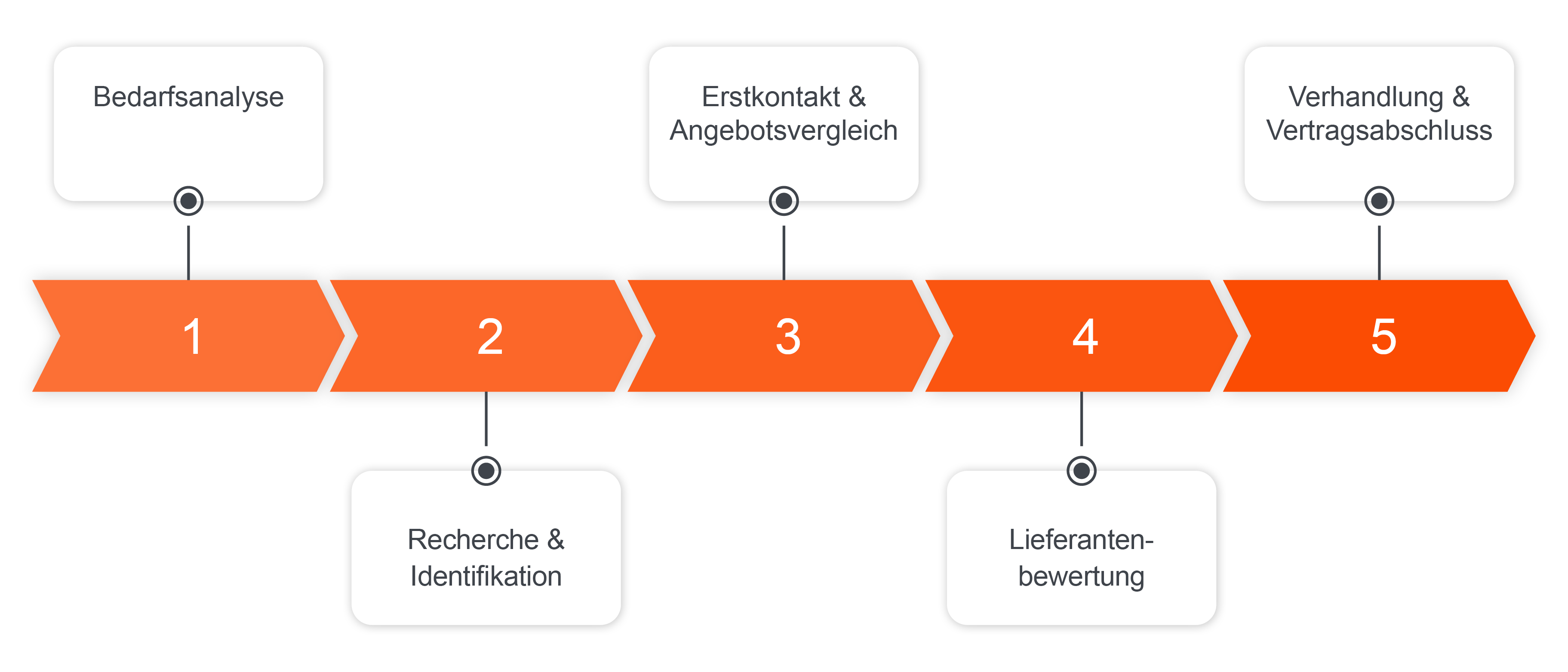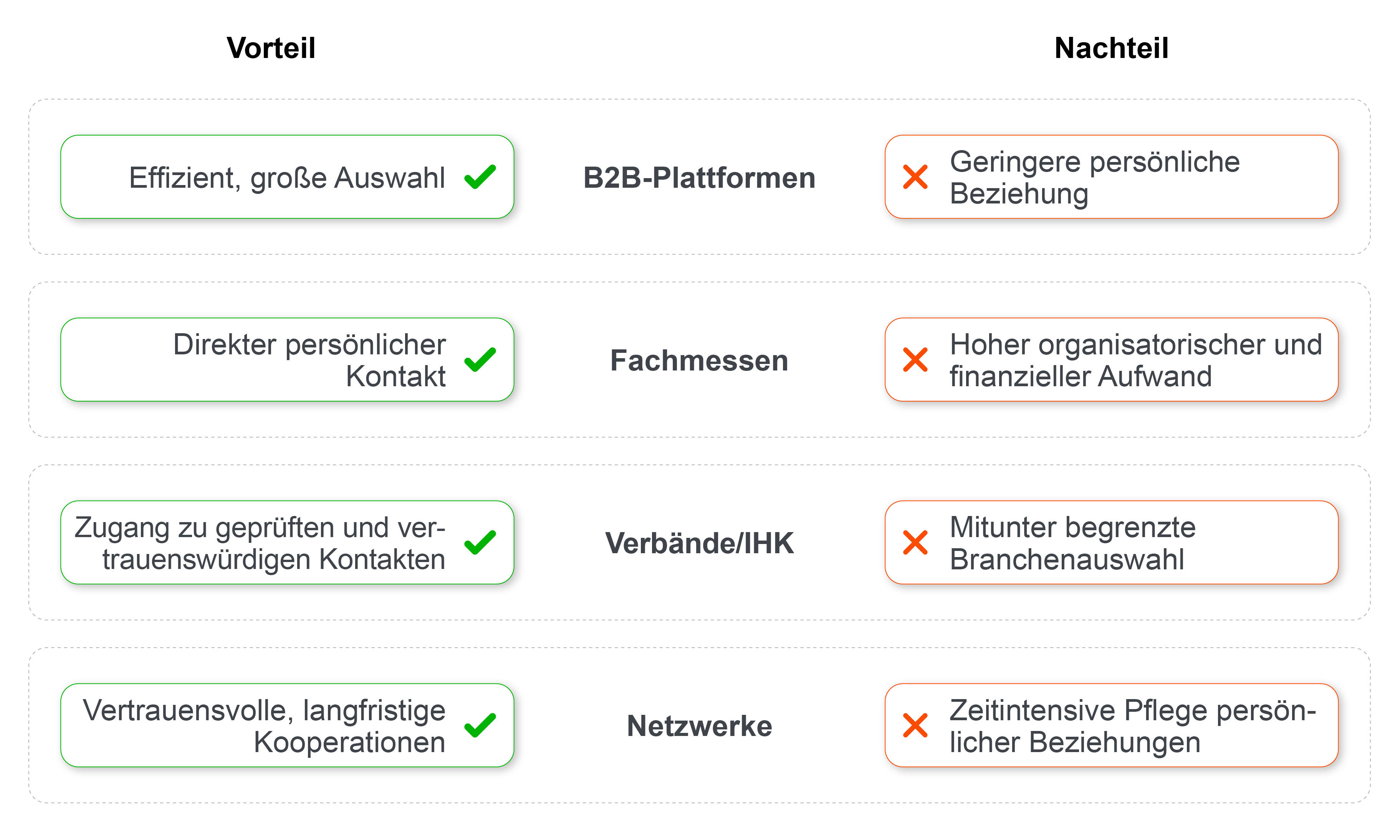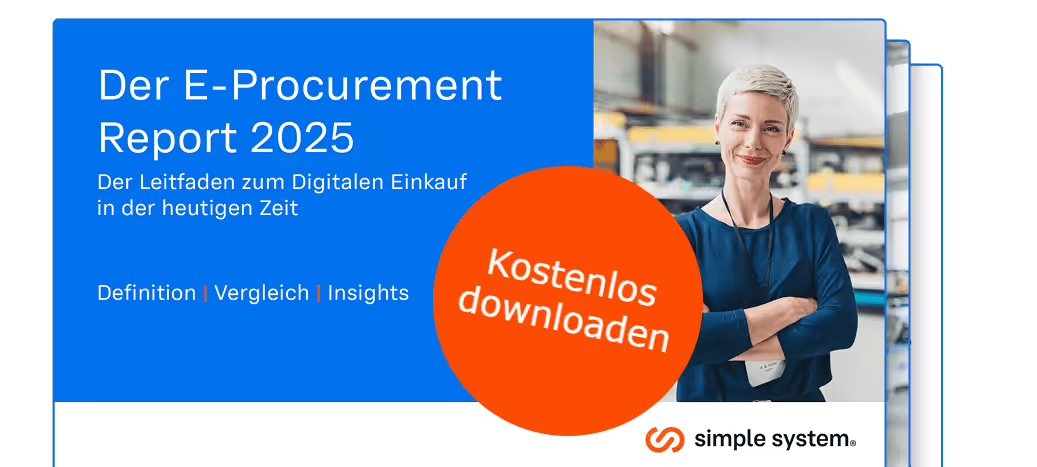Finding suppliers: The ultimate guide for 2025
The right vendor Finding is one of the most decisive success factors for every company. Whether you're launching a new product or using your existing supply chain as part of Purchasing optimization want to improve — the reliability and the quality of your partners decisively determine your own chances of success. An unreliable partner can result in production downtime, quality deficiencies and dissatisfied customers.
But how do you find the perfect partner in a global market full of potential providers? Die supplier search is much more than a quick search on the Internet. It is a strategic process that requires care, a clear structure and the right tools.
This guide takes you step-by-step through the entire process. From the initial needs analysis through the various research channels to the final evaluation and selection, we will show you how to efficiently and unerringly find the partner who really goes with your undertakings fits.
What is the supplier search?
Die supplier search (also known as “sourcing”) is the systematic process for identifying, evaluating and selecting companies that can provide required goods or services. The aim is to create a reliably working vendor to find that meets the requirements for quality, price, quantity, and delivery reliability in the best possible way and a professional Procurement management enables.
Step 1: The needs analysis — What exactly do you need?
Before the actual search begins, you must precisely define your own requirements. The clearer your requirement profile is, the more targeted and efficient you can search for potential partners. Without this preparatory work, the supplier search often unstructured and does not lead to best results.
To get started, ask yourself the following questions:
- Product specifications: Which exact technical and quality requirements must the product or service meet? Think of materials, dimensions, certifications, or special features.
- Quantities and frequency: What quantities do you need per order and over what period of time? Are there minimum order quantities that you can fulfil? This is crucial to differentiate between wholesaler and manufacturer.
- Budget and price target: What is your target price per unit? Within what framework can the conditions be negotiated? A clear idea helps to sort out unsuitable providers at an early stage.
- Logistics and location: Where must the goods be delivered? Are there any special packaging, storage or transportation requirements? Are you specifically looking for suppliers in Germany, or are international partners also an option?
Only with this detailed specification sheet are you ready for the next step: active research.

Step 2: Research — Where do you find potential suppliers?
A successful supplier search usually combines multiple channels to generate a broad and at the same time high-quality selection of potential partners.
Online research: B2B platforms and search engines
Digital search is often the first step today.
- B2B marketplaces: Specialized online platforms are designed to bring commercial buyers and providers together. They enable a targeted search for product categories, certifications, or company locations. Such B2B platforms in Germany typically offer detailed company profiles and direct contact options.
- search engines: A classic search with precise search terms (e.g. “manufacturer of CNC milled parts in the stainless steel medical technology sector”) can also provide direct results. However, these often require more intensive research, as the information is not pre-qualified.
Offline channels: trade fairs and industry associations
Despite digitalization, traditional channels remain essential to improve the quality and reliability to evaluate a partner.
- Trade shows: Trade fairs are an excellent opportunity to get to know potential suppliers in person, to examine their products live and to have in-depth technical discussions. Here you can quickly get a feel for the professionalism and know-how of a company. An overview of relevant events can be found in the official AUMA trade fair database (Exhibition and Trade Fair Committee of German Industry e.V.).
- Industry associations and IHKs: associations in your sector or the local chambers of industry and commerce (IHK) frequently have member directories with qualified and established companies. This is a very good place to go to find reputable partners.
Further sources: networks and competitive analysis
Don't underestimate the power of recommendations. Ask your professional network about experiences and contacts. Sometimes a look at the competition is also revealing: Which suppliers do successful ones use competitors? Appropriate information can typically be found through product labels or public tenders.


Einkaufen & sparen
Erfahren Sie, wie es geht, in unserem kostenlosen E-Procurement-Report. Jetzt kostenlos und unverbindlich herunterladen.
Jetzt lesenStep 3: Initial contact and offer comparison
With a list of potential suppliers (a “long list”) in hand, the phase of establishing contact and initial qualification now begins. The aim is to reduce this long list to a short, manageable “short list” of the most promising candidates.
Contact the supplier professionally
First impressions count — even for you as an entrepreneur or buyer. A professional and precise request increases the chance of a quick and useful answer. Your initial contact, usually via email, should include the following points:
- Brief company presentation: Who are you and what does your company do?
- Specific needs: Refer to your needs analysis. Which product or service are you looking for? State important specifications and planned purchase quantities.
- Clear questions: Ask for specific information such as product catalogues, price lists, minimum order quantities and delivery times. You can also ask for a direct contact person.
Get and compare offers
Collect offers from the most interesting providers and compare them systematically. Attention: The price is just one criterion among many. A comprehensive selection ofSelecting suppliers also takes into account:
- Prices and scales: How does the price develop when purchasing larger quantities?
- Payment terms: What discounts and payment terms are offered? This has a direct impact on your liquidity.
- Delivery costs and times: What are the freight charges? How fast can delivery be made?
Quality of communication: How quick, professional and helpful were the answers to your request?
Step 4: The supplier evaluation — Who is really reliable?
Once you've created your shortlist, the most important step follows: the in-depth Evaluation of a supplier. This is where the wheat separates from the chaff, and you ensure that your future partner doesn't just have a good price, but also a high quality and reliability provides. For a detailed look at this process, we recommend our guide to supplier evaluation.
You should carefully review the following areas:
- Economic stability: Request a financial report to check the financial health of the company and to minimize the risk of insolvency. This is a key aspect of purchasing risk management.
- Competence and capacity: Request product samples to verify product quality yourself. Ask about production capacities to ensure that the manufacturer can handle future growth or order peaks.
- Quality management and certificates: A certified quality management system (e.g. according to ISO 9001) is a strong indicator of professional and standardised processes.
References and reputation: Ask for customer testimonials or research independent customer reviews. What do other entrepreneurs say about the collaboration?
Step 5: Negotiation, Contract Conclusion, and Onboarding
You've found your ideal candidate. The last step is to formalize the partnership and create the basis for a successful, long-term cooperation.
- Negotiation and conclusion of contract: Negotiate the final terms. Record all aspects — prices, terms of delivery and payment, quality standards, liability issues — in a clean contract. This provides clarity and prevents subsequent misunderstandings.
- Onboarding: Actively integrate the new supplier into your processes and systems. A well-planned onboarding, for example, by installing the partner in your system for supplier management, ensures a smooth start of the business relationship.
Common questions and answers (FAQs)
How many offers should I get to make a comparison?
As a rule of thumb, try to get offers from three to five qualified suppliers. This number usually provides a sufficient basis for comparison without making the process unnecessarily complex.
What if the best supplier is located abroad?
Working with international suppliers is common practice today, but it comes with additional considerations. Before awarding a purchase order (P.O.), make sure to address important topics such as:
- Customs clearance and import regulations
- International freight costs and delivery timelines
- Applicable taxes, duties, or tariffs
- Contractual and legal requirements across borders
- Language barriers and cultural differences
Clear communication and careful planning can help avoid delays, unexpected costs, or misunderstandings in cross-border procurement.
Should I only have one or more suppliers for a product?
That is a strategic decision. A single-sourcing strategy (one supplier) can lead to better conditions and a closer partnership, while a multi-sourcing strategy (multiple suppliers) reduces the risk of failure. Many companies choose a middle ground with a main and a secondary supplier.









